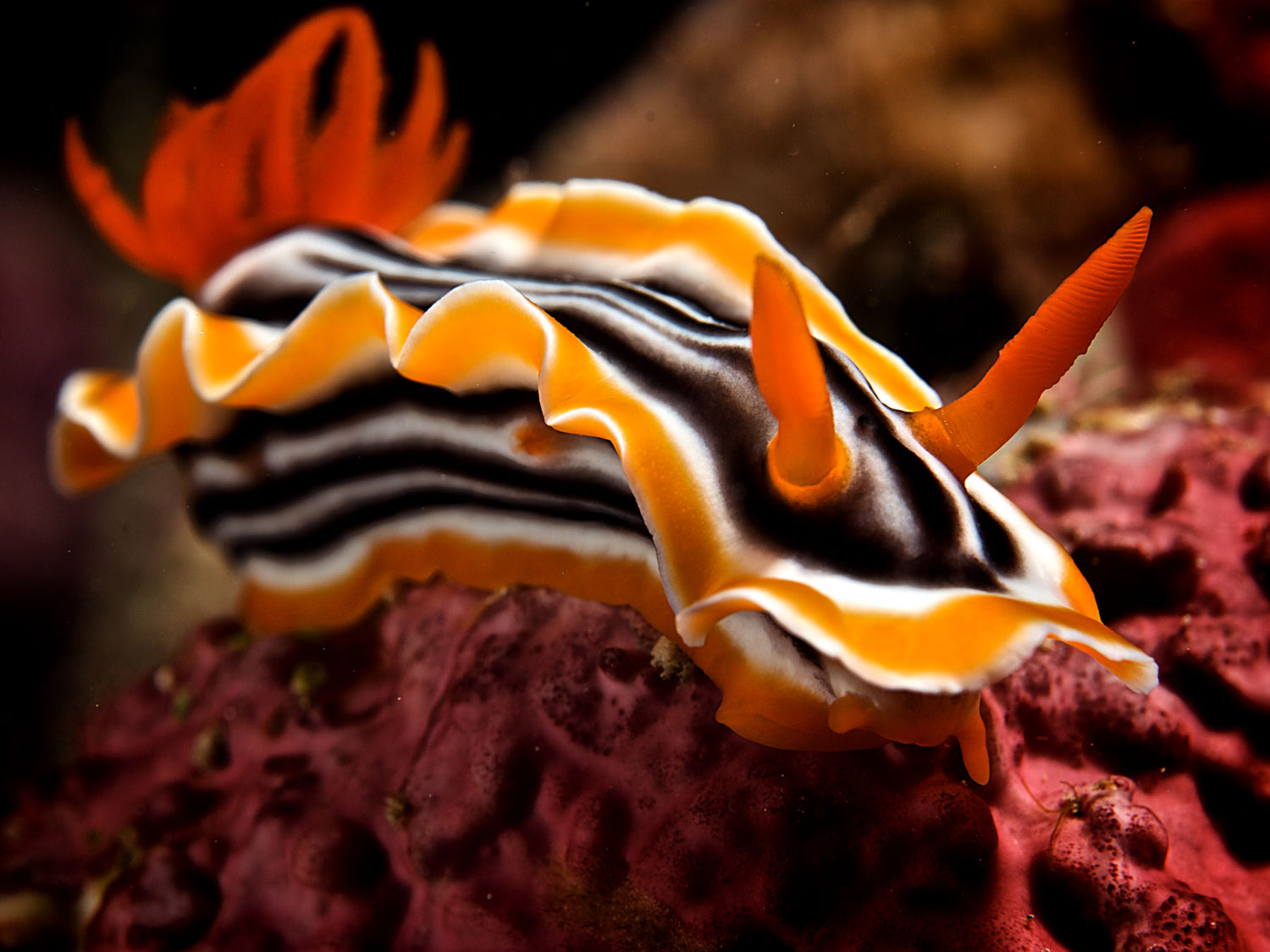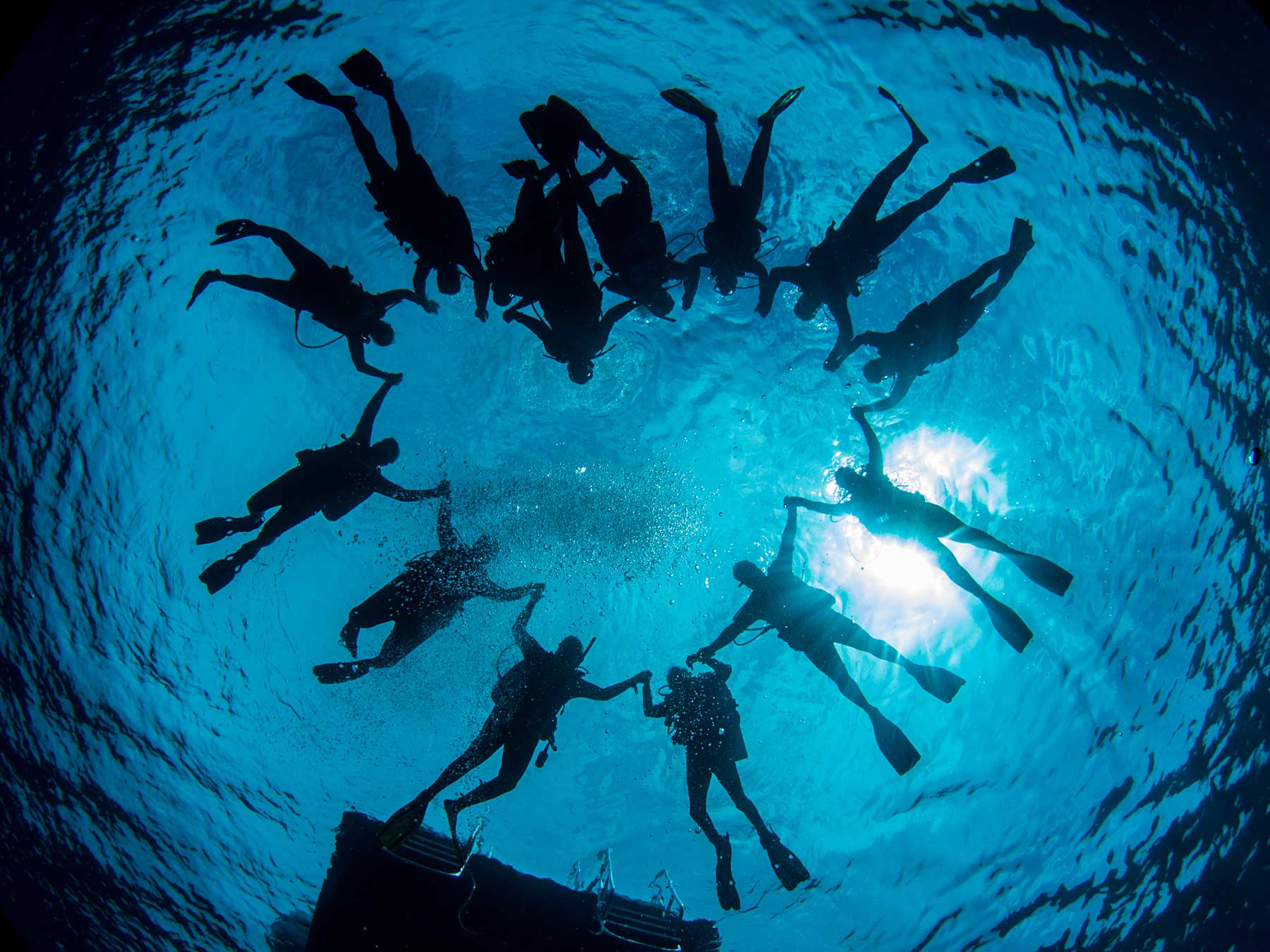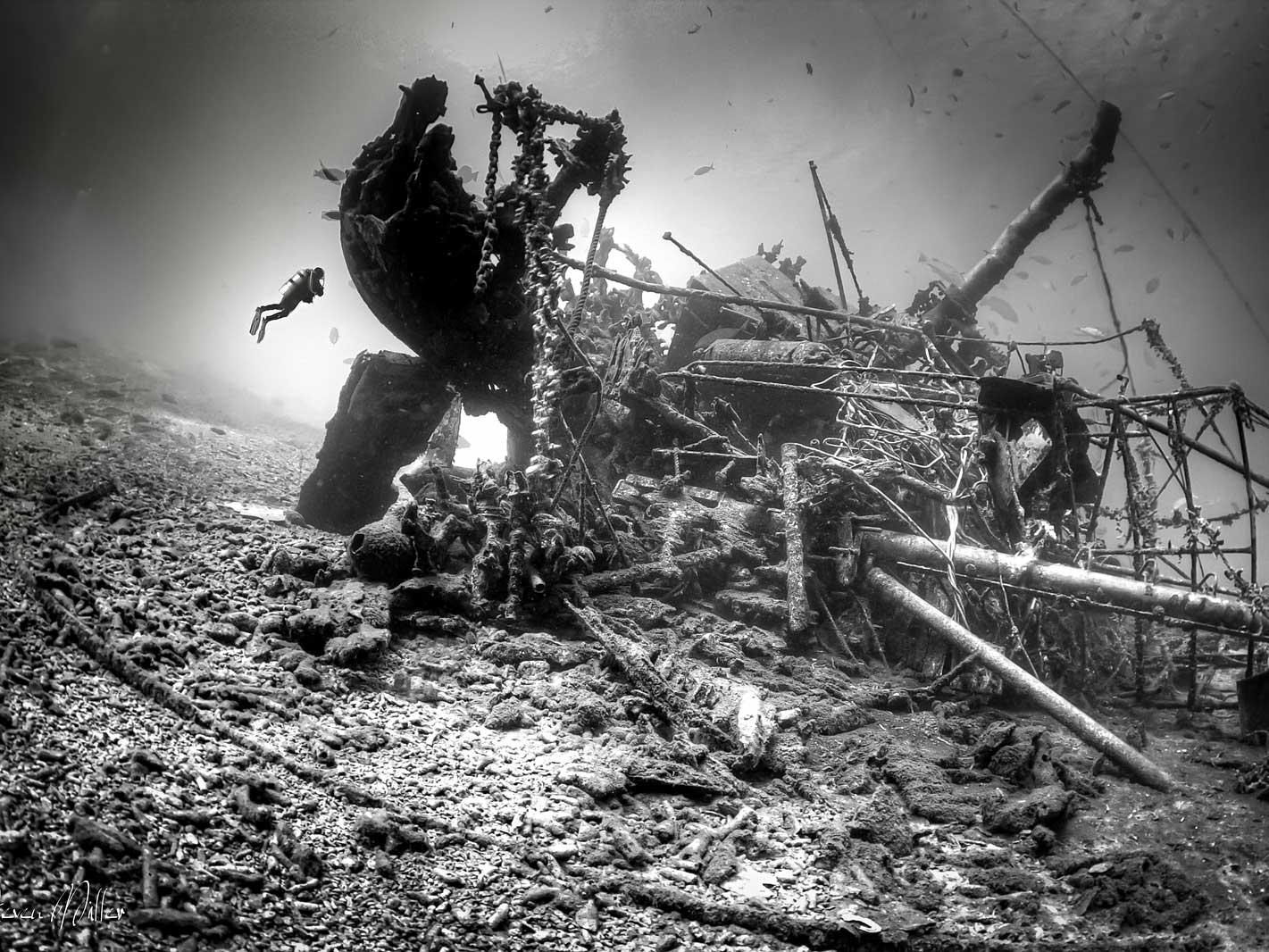These adorable little sea slugs are actually soft-bodied molluscs which have shed their shells to reveal a flamboyant display of colors. They tend to be pretty slow moving, making them an ideal subject for both beginning macro photography and more advanced techniques like snoot lighting and super macro.
Where
Most salt water seas from the arctic to more temperate and tropical regions, at virtually all depths.
DSLR + Mirrorless
ISO: 100
Mode: Manual camera; TTL strobes; Spot metering and spot focus can be hepful
Aperture: f/16 to f/22; small apertures (larger numbers) are helpful here
Shutter Speed: 1/125 to 1/250
Lens: 60mm Macro, Canon 100mm Macro, Sony 90mm Macro, or Nikon 105mm Macro on full frame cameras
Point + Shoot
ISO: 100 or the lowest your mode will allow
Mode: M Manual or Av Aperture Priority; choose Macro focus mode if available
Aperture: The smallest possible aperture (largest number) for maximum depth-of-field
Shutter Speed: 1/125 to 1/250
Focal Length: Macro mode, Microscope mode (Olympus Tough TG-series), or close-up range; external close-up lenses may be added

Almost like the birds of the sea, nudibranchs exhibit a huge variety of colored "feathers." Nudibranchs can have so many unusual features, sometimes it can be difficult to decide which part of the nudibranch is the most interesting.
Technique
Nudibranch seem to move at a snail’s pace, but that is mainly because we are in a hurry. If you observe them a few minutes, you will notice they are actually covering a lot of ground. Try to anticipate when they are going to climb an obstruction and lift themselves up from the reef. If you can get some open water behind their outline they will really stand out. As they travel across corals the background changes along the way. Every foot or so, you may notice that they will rear up to sniff the water and determine which direction to go.

Nudibranch move along at a good clip if you take the time to notice. Anticipate this as you look to where they are headed for a good frame. Occasionally they will rise up like this before changing direction. Resist the temptation to relocate them onto a background, it is bad form and bad for the animal. The stress will be apparent in the image, these guys are fragile and should never be touched.
A sharp image of the back of a nudibranch can be beautiful, but most of us want that eye level or upward camera angle for greater impact. The easiest way to get a nice nudibranch shot is to stop down your lens to the smallest aperture (largest f/number). Smaller apertures give you a greater depth of field, meaning more of the image will be in focus. Spot focus and spot metering is preferred. You must focus on the face/head/gill/whatever you deem the most important or interesting. Keep in mind that all else will be soft with lots of bokeh.
The depth of field is so slight with macro that some photographers have been making compelling shots of these with a wide open aperture (smaller f/numbers). You have to nail the face in focus, but a wide open aperture can brighten up your background to a very light blue with a very soft focus.

This species is very common in Wakatobi waters (Indonesia). You will often see several on a single dive, sometimes even together. Notice how only half of the nudibranch is in focus. Depth of field can be as shallow as an inch or less in tight macro shots.
Strobes
We can get creative with a second strobe and the use of side lighting or backlighting. But since these animals are typically low in the reef, most photographers are happy to blast them with both strobe beams angled to intersect at the animal. Snoot light can be nice on such a small subject as these.

All images Copyright © 2019 Steve Miller
Additional Reading
Super Macro Underwater Photography Techniques
Close Focus Wide Angle In Depth
Macro Close-Up Underwater Camera Settings













